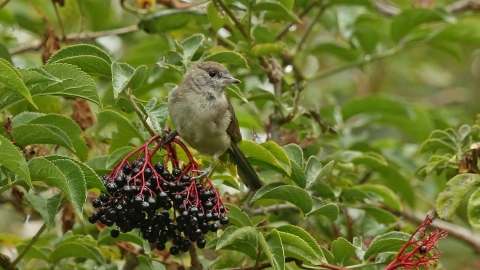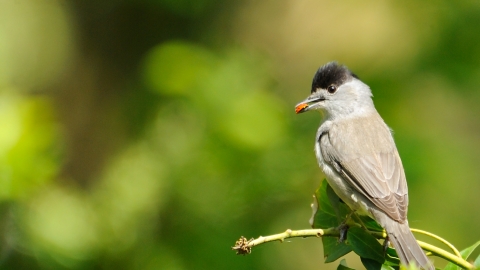
©Margaret Holland

©Amy Lewis
Blackcap
Scientific name: Sylvia atricapilla
As the name suggests, the male blackcap has a black cap, while the female has a gingery one. Look for this distinctive warbler in woodland, parks and gardens.
Species information
Category
Statistics
Length: 13-14cmWingspan: 22cm
Weight: 21g
Average lifespan: 2 years
Conservation status
Classified in the UK as Green under the Birds of Conservation Concern 5: the Red List for Birds (2021).
